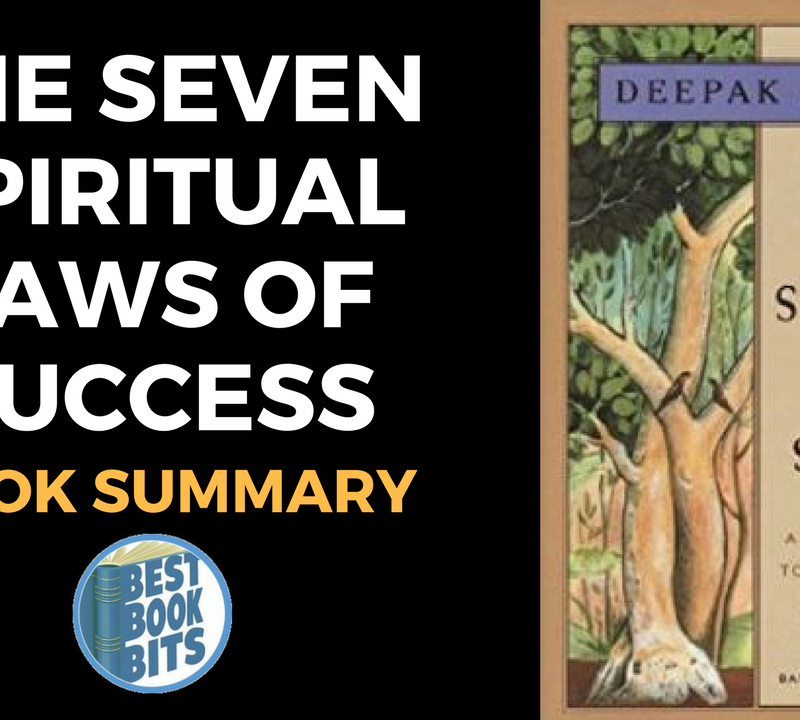GET THE 500+ BOOK SUMMARY BOX SET IN PDF & MP3 here
FOLLOW US HERE > |YouTube |Spotify | Instagram | Facebook | Newsletter | Website
Zen Mind, Beginner’s Mind: Informal Talks on Zen Meditation and Practice
by Shunryu Suzuki
In the beginner’s mind there are many possibilities, but in the expert’s there are few
So begins this most beloved of all American Zen books. Seldom has such a small handful of words provided a teaching as rich as has this famous opening line. In a single stroke, the simple sentence cuts through the pervasive tendency students have of getting so close to Zen as to completely miss what it’s all about. An instant teaching on the first page. And that’s just the beginning.
In the forty years since its original publication, Zen Mind, Beginner’s Mind has become one of the great modern spiritual classics, much beloved, much reread, and much recommended as the best first book to read on Zen. Suzuki presents the basics-from the details of posture and breathing in zazen to the perception of nonduality-in a way that is not only remarkably clear, but that also resonates with the joy of insight from the first to the last page.
“In the beginner’s mind there are many possibilities, but in the expert’s there are few.”
Shunryu Suzuki begins the book by stating the essence of Zen Buddhism — “Shoshin (初心)” or “beginner’s mind”.
He says:
“The practice of Zen mind is beginner’s mind. The innocence of the first inquiry — what am I? — is needed through Zen practice. The mind of the beginner is empty, free of the habits of the expert, ready to accept, to doubt, and open to all the possibilities. It is the kind of mind which can see things as they are, which step by step and in a flash can realise the original nature of everything.”
He further elaborates:
“In the beginner’s mind there is no thought, “I have attained something.” All self-centered thoughts limit our vast mind. When we have no thought of achievement, no thought of self, we are true beginners. Then we can really learn something.”
The purpose of practice is to turn a skill into a habit. To make it automatic, something delegated to your subconscious mind.
But this can result in arrogance. The more you do something, the better you are at it, and the less likely you will be open-minded about it.
“Suppose you recite the Prajna Paramita Sutra only once. It might be a very good recitation. But what would happen to you if you recited it twice, three times, four times or more? You might easily lose your original attitude towards it.
The same thing will happen in your other Zen practices. For a while, you will keep your beginner’s mind, but if you continue to practice one, two, three years or more, although you may improve some, you are liable to lose the limitless meaning of original mind.”
This is why it’s a fundamental idea of Zen Buddhism. (And likewise, it can be applied anywhere else.)
Just like everything, keeping a beginner’s mind requires constant practice.
After this, the book is split into the three different aspects of Zen.
The Right Practice
There are three practices of Zen Buddhism: the zazen posture, breathing and bowing.
- Zazen (“座禅”)
This is the sitting posture commonly associated with the philosophy.
This is how Suzuki describes each aspect of the posture.
Legs
“When you sit in the full lotus position, your left foot is on your right thigh, and your right foot is on your left thigh. When we cross our legs like this, even though we have a right leg and a left leg, they have become one.
The position expresses the oneness of duality: not two, and not one. This is the most important teaching: not two, and not one. Our body and mind are both two and one. Our life is not only plural, but also singular. Each one of us is both dependent and independent.”
Posture
“The most important thing in taking the zazen posture is to keep your spine straight. Your ears and your shoulders should be on one line. Relax your shoulders, and push up towards the ceiling with the back of your head. And you should pull your chin in.
Also to gain strength in your posture, press your diaphragm down towards your lower abdomen (hara). This will help you maintain your physical and mental balance.”
Hands
“Your hands should form the “cosmic mudra”. If you put your left hand on top of your right, middle joints of your middle fingers together, and touch your thumbs lightly together (as if you held a piece of paper between them), your hands will make a beautiful oval.”
- Breathing
Once your posture is correct, you can focus on your breathing.
Focus on your breath as if it was a door opening and closing. Just watch the door open and close, without trying to open or close the door yourself.
If it helps, his other analogy was to watch your breath as if you were watching the waves of the sea. Just watch the waves come and go, without trying to control it.
And while you’re watching your breath, you’ll realise that your thoughts keep coming and distracting you from your focus. That’s okay. Watch your thoughts as they come. You don’t have to restrict them or control them.
“When you are practicing zazen, do not try to stop your thinking. Let it stop by itself. If something comes into your mind, let it come in, and let it go out. It will not stay long. When you try to stop your thinking, it means you are bothered by it. Do not be bothered by anything. It appears as if something comes from outside your mind, but actually it is only the waves of your mind, and if you are not bothered by the waves, gradually they will become calmer and calmer.”
- Bowing
Finally, bowing.
This is done to remove the ego and surrender oneself to the universe.
“Bowing helps to eliminate our self-centered ideas. This is not so easy. It is difficult to get rid of these ideas, and bowing is a very valuable practice. The result is not the point; it is the effort to improve ourselves that is valuable. There is no end to this practice.
Each bow expresses one of the four Buddhist vows. These vows are: “Although sentient beings are innumerable, we vow to save them. Although our evil desires are limitless, we vow to be rid of them. Although the teaching is limitless, we vow to learn it all. Although Buddhism is unattainable, we vow to attain it.” If it is unattainable, how can we attain it? But we should! That is Buddhism.”
The Right Attitude
Like with everything, you need to bring the right attitude to practice.
- Be present
Here’s an analogy from Suzuki:
“To cook is not just to prepare food for someone or for yourself; it is to express your sincerity. So when you cook you should express yourself in your activity in the kitchen.
You should allow yourself plenty of time; you should work on it with nothing in your mind, and without expecting anything. You should just cook!
That is also an expression of our sincerity, a part of our practice. It is necessary to sit in zazen, in this way, but sitting is not our only way. Whatever you do, it should be an expression of the same deep activity.
We should appreciate what we are doing. There is no preparation for something else.”
A further elaboration:
“As long as we have some definite idea about or some hope in the future, we cannot really be serious with the moment that exists right now. But there is no certain way that exists permanently. There is no way set up for us. Moment after moment we have to find our own way. Some idea of perfection, or some perfect way which is set up by someone else, is not the true way for us.”
Being present is not something that is solely reserved for zazen practice. It should be an attitude that is brought everywhere in your life.
“Now zazen is over, and we will go about our everyday activity.” But this is not the right understanding. They are the same thing. We have nowhere to escape. So in activity there should be calmness, and in calmness there should be activity. Calmness and activity are not different.”
- Acceptance and non-judgment
He writes:
“Before we were born we had no feeling; we were one with the universe. This is called “mind-only,” or “essence of mind,” or “big mind”. After we are separated by birth from this oneness, then we have feeling. You have difficulty because you have feeling. You attach to the feeling you have without knowing just how this kind of feeling is created.
When you do not realize that you are one with the river, or one with the universe, you have fear. Our life and death are the same thing. When we realize this fact we have no fear of death anymore, and we have no actual difficulty in our life.”
This is also applicable to our daily lives, especially in communicating with each other.
“When you listen to someone, you should give up all your preconceived ideas and your subjective opinions; you should just listen to him, just observe what his way is. We put very little emphasis on right and wrong or good and bad. We just see things as they are with him, and accept them. This is how we communicate with each other.
Usually when you listen to some statement, you hear it as a kind of echo of yourself. You are actually listening to your own opinion. If it agrees with your opinion you may accept it, but if it does not, you will reject it or you may not even really hear it.”
- Not adding anything to your practice
Don’t bring anything to your practice. No ego, no pride, no ideals, no goals.
“When something becomes dualistic, that is not pure. If you think you will get something from practicing zazen, already you are involved in impure practice. It is all right to say there is practice and there is enlightenment, but we should not be caught by the statement.
You should not be tainted by it. When you practice zazen, just practice zazen. If enlightenment comes, it just comes. We should not attach to the attainment.”
The Right Understanding
There are 8 core principles:
- The true purpose of Zen is to see things as they really are.
- We exist not for the sake of something else, but for the sake of ourselves.
- Focus on experience, not philosophy.
- Do not focus too much on your teachings or what your teacher says. Zazen is all about you. Your teacher gives you the understanding, but only you can find your true nature.
- Practice should be done daily and consistently.
- Practice should be done according to the individual.
- Practice emptiness. Hearing all information as if it’s the first time you heard it. Don’t add your preconceived notions to it.
- Buddha is in everyone, everything and in every action. That makes all actions and things equally important. This is why you need to practice presence and mindfulness.













